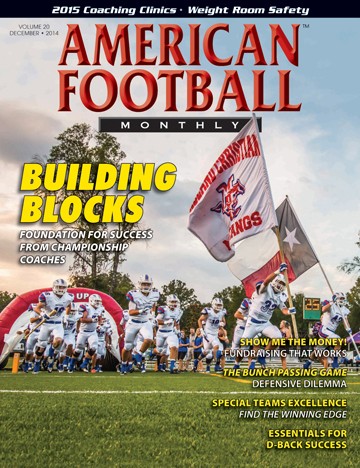Article CategoriesAFM Magazine
|
Speed Report: Running Ahead of Speed - Stimulus for Training Incentives (Part II)by: Dale BaskettFootball Speed Specialist © More from this issue In our last article on running ahead of speed, we focused on in season concepts that aide the transition of off season development. In part two, here are suggestions and methods that can help stimulate your athlete to strive for higher production. Working year-around can sometimes be mundane, which will disrupt the concentrated and continuous focus needed. Their sense of purpose is significant for sustaining collective desire for reaching objective goals and benchmarks. Speed training is much like lifting in certain ways. However, sensing a gain in development can sometimes become a bit elusive. Weightlifting is very measurable. Without the measurements being continuously used in the weight room, the incentive for doing the work load demand could be impaired. Players know what the number index is every week, which....The full article can only be seen by subscribers.
|
|
|||||||
| HOME |
MAGAZINE |
SUBSCRIBE | ONLINE COLUMNISTS | COACHING VIDEOS |
Copyright 2025, AmericanFootballMonthly.com
All Rights Reserved





